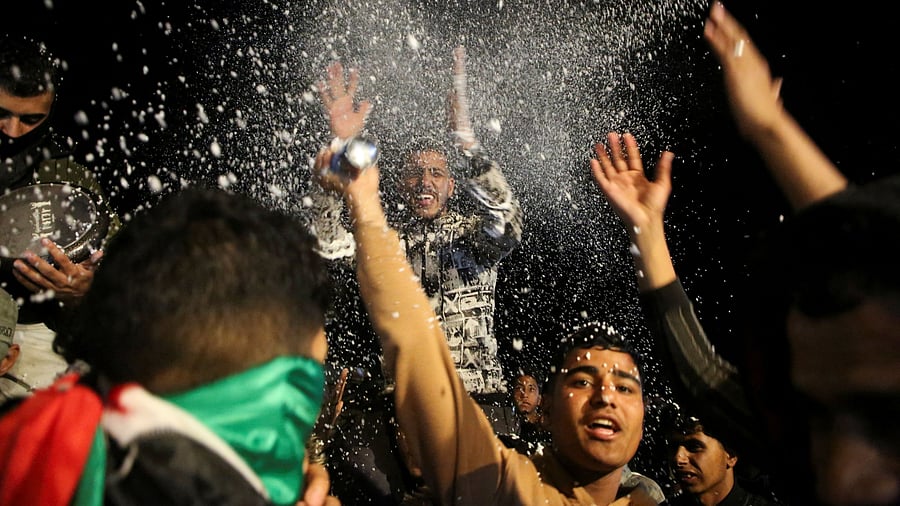
Palestinians react to news on a ceasefire deal with Israel, in Khan Younis in the southern Gaza Strip.
Credit: Reuters
The ceasefire agreement formalised between Israel and Hamas – and brokered by Qatar, Egypt, and the US – marks a significant point in the conflict and enables stoppage, however brief, to a 15-month war. Initial takeaways from the deal, announced by Qatari Prime Minister Mohammed bin Abdulrahman Al Thani, are largely about the first phase of this agreement which starts on Sunday. These pertain to a six-week ceasefire, the withdrawal of Israeli troops from Gaza’s populated parts, a phased release of 33 hostages held by Hamas, and in return, a staggered release of Palestinian prisoners from jails in Israel. The terms for the second and third phases of the agreement are expected to be firmed up during these 42 days. More than 46,000 Palestinians are estimated to have been killed since Hamas’ October 7, 2023 attack on Israel. The deal marks a period of respite for civilians in the war-torn enclave and allows thousands to return to what is left of their homes in the north.
However, this is no roadmap to peace. There is ambiguity regarding the terms that would steer the subsequent phases of the deal. The office of Israeli Prime Minister Benjamin Netanyahu has confirmed the agreement to release the hostages but only after delaying a cabinet vote to ratify the ceasefire – Hamas was accused of reneging on parts of the deal. Furthermore, Israeli attacks on Gaza have continued; the Palestinian Civil Defence estimates that more than 100 people have been killed since the announcement of the ceasefire. Scepticism is a given because the first such deal since the beginning of the war, in November 2023, fell apart in a week. There is greater intent this time, from the negotiators, to ensure a follow-through to the first phase of the deal but it is only pragmatic to look at the initial period less as a sign of attainable peace and more as a critical time for the stakeholders to coordinate the inflow of humanitarian aid and supplies.
The ceasefire has materialised as a culmination of sequential events – Israel’s successful offensives that left Hamas depleted, weakened Hezbollah and Iran, and activated the fall of the Bashar al-Assad regime in Syria. In the US, Joe Biden and Donald Trump have claimed credit for the agreement. While the Biden administration took the lead in the months-long negotiations, president-elect Trump is believed to have played a crucial role in fast-tracking what he called the “epic” deal. There is guarded optimism; there are signs of incremental hope. However, this pause in hostilities should not make the world look away from Gaza which, even if the truce holds, will need extensive international support in its reconstruction and to establish a system of governance.
